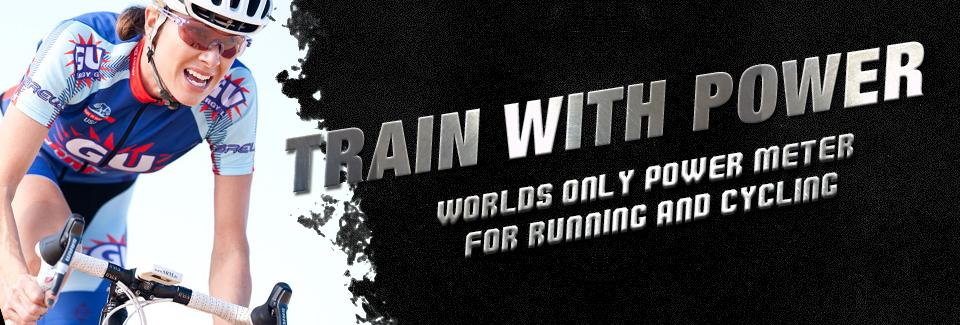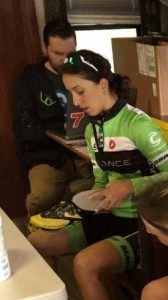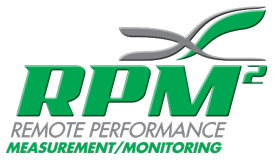Last week, we discussed Jim Vance’s book Run with Power: The Complete Guide to Power Meters for Running. The RPM² 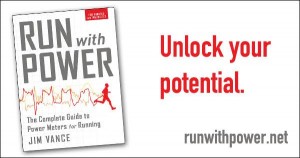 system, which features the world’s first footbed-based power meter is discussed at length in Run with Power. Jim Vance is one of the most experienced and knowledgeable coaches when it comes to power meters and their benefits to the endurance community. His insight is of great value to coaches, trainers, and athletes, and for this reason, we are honored to provide exclusive content from his book to our readers. Below is a sneak peak of the content this book has to offer.
system, which features the world’s first footbed-based power meter is discussed at length in Run with Power. Jim Vance is one of the most experienced and knowledgeable coaches when it comes to power meters and their benefits to the endurance community. His insight is of great value to coaches, trainers, and athletes, and for this reason, we are honored to provide exclusive content from his book to our readers. Below is a sneak peak of the content this book has to offer.
To order a copy, visit the publisher’s website or purchase it on Amazon.com or at Barnes and Noble.
To learn more about the book, visit www.runwithpower.net.
Chapter 1: Why Use a Power Meter for Running?
Adapted with permission of VeloPress from RUN WITH POWER by Jim Vance.
“Do you have high goals?
Are you trying to qualify for an event or place high at a certain race?
Perhaps you simply want to run a faster time than you’ve run before. The higher you set your goals and the better you become, the more commitment you’ll need to reach your next level, however you define it. And as your goals become more challenging, the margin for error in your training and performance will become ever smaller. Many of your competitors are just as good as you are, and some of them are better. It’s crucial that you get your training right.
Training is stressful on the body. It has to be, because fitness is really just the ability of your body to tolerate a level of stress. The faster you go, the more stress you put on your body for a given level of fitness. But for as long as runners have been training, our ability to measure the amount of stress we put into our bodies has been quite limited.
We can track volume easily—we don’t need anything more sophisticated than a training diary to record how long and how far we train each day. But volume is not a very accurate way to measure stress. Workout intensity is the real key to fitness, but the usual ways we measure intensity, such as a scale of perceived exertion, are subjective. Heart rate (HR) is a tool we’ve used to infer intensity in the past, but it’s flawed, too. In addition to the fact that heart rate does not measure intensity directly, it can also be affected by factors unrelated to training, such as diet, temperature, and stress. Pace may seem as straightforward as training volume at first, but in fact it is hard to quantify; varying terrain and elevation can markedly affect pace. Windy, hot, or cold conditions can also affect pace negatively or positively, adding to the challenge of quantifying the intensity.
All of these tools are helpful in creating a snapshot to measure fitness, and yet none of them give us an impartial way to monitor training intensity with repeatable precision. But when we measure stress incorrectly, our training suffers. We become more vulnerable to injury. We may suffer from a lack of recovery. We may get intensity wrong. Any one of those setbacks can derail a training plan. What we need, clearly, is a better way to measure the stress we are inflicting in our daily training routines. And that’s exactly what the power meter provides, and it is why the power meter has the potential to revolutionize your run training.
With a power meter, you can measure your performance and training stress more precisely than ever before, and take control of your training and racing to improve every aspect of your running career. No longer will you wonder whether you are meeting the intensity, recovery, pace, and volume goals of your training plan. Instead, you will erase any doubts about your training, and you will be able to monitor changes and improvements in every aspect of your running fitness.
Why Run with a Power Meter?
If you’re a triathlete, a bicycle racer, or a fan of either pro sport, you are probably already familiar with the use of power meters in cycling. The power meter transformed training and racing in the cycling world. It has surpassed every other training tool because it delivers an objective and repeatable assessment of overall fitness without any of the drawbacks of previous measurement methods, such as heart rate, speed, and perceived exertion. In fact, the advantages of the cycling power meter are so great—and the margin of error so small in the world of competitive cycling and triathlon—that to ignore the information and the advantage from a power meter would be to concede victory before the race had started.
In the running world, we have recently seen a surge in the popularity of GPS units, and we’ve seen these units get smaller and smaller as usage has grown. The increased adoption of GPS shows that the running world, like the cycling world, is open to embracing technology and its benefits.
While the GPS unit is a useful tool, its contribution to training pales in comparison with the advantages the power meter can provide. The leap in technology is something like the difference between using a typewriter and a computer. In the history of running technology, a stopwatch is probably equivalent to using a typewriter—pretty good at its job, but severely limited in scope. Running’s step up to heart rate monitors was a revelation, but in retrospect, it was like moving from the typewriter to what we would now regard as an old, heavy, slow desktop computer. Today’s GPS wrist units are like the first cellphones, much like a flip-phone. The portable power meter for running is the next step, equivalent to the laptop, tablet, and smartphone coming into existence all at once. And while you can still accomplish a lot with a desktop computer, you likely will be much more effective in many ways if you add the laptop, tablet, and smartphone to your arsenal. This is what the power meter brings to the world of training and racing for competitive running.
I am sure you are wondering what makes this technology so great.
Here are just some of the ways a power meter for running can positively affect your training and performance.
Boost Your Training Specificity: One of the core principles in sports training is the principle of specificity. Simply stated, in order to become better at a specific task, you must practice or train that task. Power meters help us see how well our specific training is improving our fitness. More to the point, the power meter can help you prepare for the specific demands of the target race you’re preparing for.
A Running Power Can Improve Your Running Technique: Imagine making a small change in your run form and seeing a major change in power (whether good or bad). A running power meter can help you understand which aspects of your running technique you need to focus on and which you can improve or even abandon. It also is a huge asset late in a race, when you may be tired and need help to stay focused on going as fast as you can.
Your Power Numbers Don’t Lie: Fitness may seem pretty simple to measure: Just look at how fast you ran. But not all courses are the same, and conditions vary constantly. What if you ran entirely into a headwind? Or had a constant tailwind? Yes, pace is a good tool for analyzing your training, but power and pace together are an even more powerful way to measure training and fitness. Add in heart rate (HR) and you’ve got some very objective data to work with.
Predict a Fitness Plateau: Used together, your power, pace, and heart rate numbers can tell you when you’re about to hit a performance plateau and need to consider a change in your training.
Monitor Injuries: If you get injured, you can use your power meter measurements to understand exactly how much fitness you’ve lost, or better yet, bolster your confidence by showing you how little fitness you have actually lost. In some cases, the data from your power meter can even tell you if you are still suffering from an injury that you thought you had put behind you (or, more likely, that you are pretending to ignore).
Know Truly How Hard You’re Training: With power data, you can know your actual training volume, intensity, stress, and fatigue. Your Training Stress Scores can also show you your trends in these measures over time.
Better Recovery: If you don’t recover adequately, you’re not actually training; you’re just beating yourself down. You are probably familiar with the formula Training = Stress + Rest. But how much stress is enough? How much is too much? How often do you need to take a day off? How many days of recovery do you need after a big training block? If you understand the correct amount of recovery you need based on the data from your power meter, your training will be better.
Power Meters Offer Precision Tapering: Tapers and their effectiveness can vary greatly among athletes. Some athletes feel that they shouldn’t taper at all, some are trying to figure out how long to taper, and others are just trying to find out what type of taper to do. When you have data from your power meter that measures training stress and fatigue, you can use it to better plan and perfect your taper, down to specific target numbers. When you can taper with precision, you’ll know you are ready when you toe the start line.
Warm-Up Without Wasting Energy: There’s no use expending more energy before a race than absolutely necessary. With the data from your power meter, we can dial in specific intensities and certain physiological systems to deliver a high-quality warm-up that will prepare you fully for your race.
Power-to-Weight Ratios: Your power meter will identify your power-to-weight ratio, which can tell you a lot (including your ideal racing weight). If you’re looking to break 3 hours for the marathon, reaching a certain power-to-weight ratio might be a very effective metric on which to base your training and diet.
Speed per Watt: Possibly the most important concept in this book, and arguably the biggest advantage of a power meter, is a better understanding of how the watts you produce are converted into speed. This insight into your running is something you could never measure until now.
Is Your Training Working? At the end of your season, the data you’ve accumulated from your power meter can be invaluable in assessing how well your training plan worked and what to do next. Your power meter will offer a detailed look into yourself as an athlete, and your power meter data gives you an unparalleled view of your season’s ups and downs.
Pacing to Win: A power meter can help you establish and maintain the correct pace, even on courses where establishing the right rhythm is difficult. For example, if you’re preparing for a hilly course that requires perfect pacing, your power meter can help you dial in the exact output pace you need to hold throughout the varying terrain.
Know When to Open the Throttle: Let’s say your race is going really well, perhaps even better than expected and you feel like you’ve got more you can give. Your power meter can give you an objective assessment of your running condition and can help you determine—even in the middle of a race—when you have the form to open the throttle.
You need my book RUN WITH POWER. The truth is, you can’t really get most of these benefits directly from your running power meter. Just collecting your data from your power meter and loading it onto a computer or website is not enough. You have to know how to analyze and interpret your data, not just today, but over time. That’s where my book Run with Power can help you.
Run with Power will give you a great understanding of the current state of power meter technology and how we can use it. It’s the first book of its kind, and I will be the first to admit that there is plenty more to learn about power meters in the years ahead. But I am confident that the power meter can help you improve your training and fitness right now, starting today. I am also convinced that this book has the right information to get you started so that you can use your power meter effectively. In the following chapters, we’ll define the concept of power, then explore the many ways to use power measurements in your daily training and racing. So let’s get going on the path to better running.”
Stay tuned for more sneak peeks of Run with Power. Be sure to follow RPM² on Facebook, Twitter, and Instagram. You can also subscribe to our YouTube channel, which features testimonials and tutorials to help you get the most of out of products.
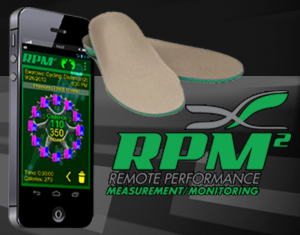 cycling and running. Today, we are going to discuss another important step you should take before your purchase your RPM² footbed system: determining your metatarsal measurement.
cycling and running. Today, we are going to discuss another important step you should take before your purchase your RPM² footbed system: determining your metatarsal measurement.
